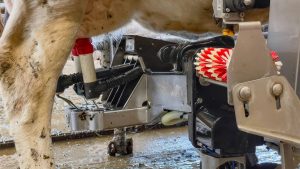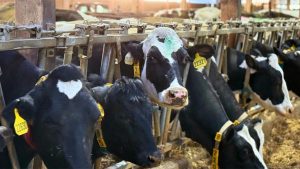
6583 dairy herds today
DATCP/NASS announced that as of Jan. 1, 2022, Wisconsin had 6,533 herds milking on state dairy farms. That’s a drop of 399 from a year ago and 39 more than the 360 farms that disappeared in 2020 — far fewer than the loss of 818 licensed herds in 2019.
Looking back even further, in 1991 when this column had its start there were 32,521 herds in the state meaning a loss of 26,000 herds over the 31 years.” What a shock! What a surprise!” To whom” I ask, “and why?”

Small farms, small herds
In the 1930‘s There were an estimated 130,000 dairy farms in the state, mostly small and with few cows. After World War II and the advent of increased milking technology, farm numbers continued to fall. What happened?
Since the 1950’s a new generation of farmers was entering the dairy scene and began moving from the old wooden stanchion barn with small narrow dairy stalls, a silo you had to climb daily, a hay baler from which you had to lift each and every bale and years without a vacation to a modern dairy operation. Many dairy producers considered it spending money to get out of slavery and into the modern world, to get kids into college, take vacations and have a business that would support a family in a civilized manner.
To do so, fathers and sons combined their small farms to make one bigger farm where one set of labor-saving machinery replaced several sets of outdated, obsolete, labor intensive junk. In many families, sons and daughters decided to join the family farm resulting in more land and cows.

“Many farms that couldn’t compete ended up as (failed) farm statistics.” farm experts said. Wait just a minute! What do they mean by “couldn’t compete?” I have yet to meet a farmer who quit farming because they couldn’t “compete” with other farmers. I do know hundreds, maybe thousands who left farming because they wanted to retire and fortunately had a neighbor willing to offer the means (money) to make retirement possible.
Not competing with each other
Farmers do leave farming because they can’t compete, but chances are that the competition is from real estate companies, industrial development committees, road builders and rich city folks – all who will pay tons of money for a farmer’s land.

Of course, a few dairy farmers do fail just like electricians, lawyers, writers, computer experts and even doctors. There are many reasons for financial failure – divorce, illness, family feuds, weather and bad luck. Pure and simple, most dairy farms absolutely do not fail but those thousands of dairy farming units that disappeared from the records over 30 years did go somewhere.
Merging 3 into one
Just because two or three brothers built a new dairy facility together and closed three ancient ones doesn’t mean anyone failed. It’s an insult to all those progressive farmers who studied, planned, invested and now operate top-notch dairy operations. Chances are that the new modern facility is a major success in terms of a better lifestyle and financial situation.

Many sons and daughters of dairy farmers went to college and became educators, industry leaders or professionals. Eventually the “home place” was sold to a neighbor who was expanding his herd, a new farm family or perhaps to a nearby city for development.
It’s a business and lifestyle
Dairy farming today is built on technology, serious planning and family decisions. Work is still hard but different. It’s money intensive like many businesses, however; nature still calls the shots and guarantees of success are few and far between.
Yes, it hurts me to see those empty barns and farmhouses where I’ve visited and drank coffee in and in which I talked with farmer friends.

Stories of fewer dairy farms are always sad to read but before we declare war on someone or something, tell me this: What is the right number of dairy farms for Wisconsin and who should be running them? I and an entire industry would like to know.

























